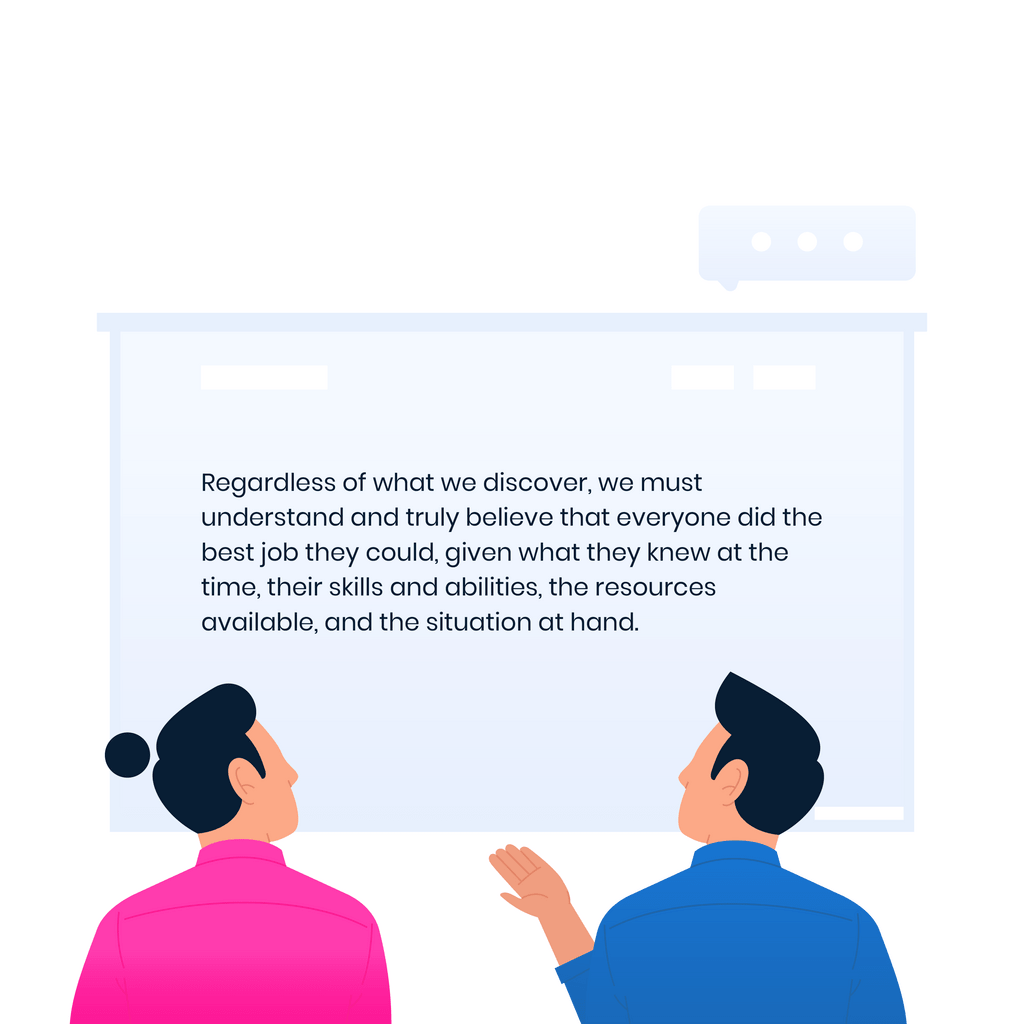Retrospective Prime Directive:
What Is It & Why Is It Important?

The sprint retrospective is one of the more overlooked tools in an agile workflow. Most teams are focused on profit and productivity — to the point of tunnel vision! So it's easy to see why something called a “retrospective” might go unused or improperly implemented.
The retrospective prime directive aims to solve that problem; reaffirming the need for retrospectives in agile workflows, and showing teams how to approach them in the right way.
What is the retrospective prime directive?
Star Trek fans will know that the "Prime Directive" is the unbreakable mission statement of Starfleet. It's a guiding rule, deciding the course and tone for whatever (and wherever) the team encounters.
The sprint retrospective takes the same concept and applies it to retrospectives in an agile workflow. According to the Retrospective Wiki, the prime directive states:
"Regardless of what we discover, we must understand and truly believe that everyone did the best job they could, given what they knew at the time, their skills and abilities, the resources available, and the situation at hand."
The history of the retrospective prime directive
The retrospective prime directive statement was developed by Norm Kerth in his book, Project Retrospectives: A Handbook for Team Review. In this book, Kerth explores the prime directive as a means for understanding and guiding the retrospective process.
The primary goal of this tool is to create an environment of psychological safety within your retrospectives. It's used to steer teams away from potentially negative discussions, such as placing blame, dwelling on frustrations, or feeling disappointed at the end of a sprint.
Although the prime directive has only been around for the last twenty years — and has only been delved into within Kerth's book — it's still found its place in many agile team's workflows. Product managers tack it to conference room walls, and teams often write it at the start of a retrospective, to get everyone aligned.
What does the retrospective prime directive mean for you?
So what does this statement mean for your team? How can it change the way you work — and how can it add value to your retrospectives?
Rethink the purpose of your retrospectives
For many, the retrospective is a time to dissect a sprint, or period of work, that has just ended. You've accomplished a milestone, created a design or a product, and are ready to move on to the next phase.
The retrospective serves as an intermediary point where your team reflects on what went right and what went wrong. This way, you can move on with a sense of what to improve and what to maintain. (Check out our guide on the questions to ask during a retrospective, for more inspiration).
While this should be a positive exercise, it can easily slip into a negative rut. Over time, focusing on the bad stuff can even become the default for your retrospectives. They become a place to criticize and to vent — neither of which is very constructive.
Instead, the prime directive urges teams to focus on the good. Rather than thinking that missed opportunities are the result of a lack of trying, remember that your team has limits and that some goals simply aren't attainable. Rather than pushing your team to work harder, create a plan of action that is reasonable and good for morale.
Embrace structure in your retrospectives
This might seem like a small and even limiting change, but it can make a huge difference. Knowing how you want to communicate and what points you want to get across will help guide your team and create more productive conversations.
The time you spend not working is just as valuable as the time you spend working
Retrospectives are sometimes viewed as "not real work" — that’s why they get sidelined.
The retrospective prime directive is an immensely beneficial tool for ensuring that this time is as productive as can be, even if you don't technically produce anything. It's a space to collaborate, to plan and discuss, and to prepare for the next phase of work. Following this directive will help your team grow and improve, which is vital to the success of your company.
The retrospective prime directive is an immensely beneficial tool for ensuring that this time is as productive as can be, even if you don't technically produce anything. It's a space to collaborate, to plan and discuss, and to prepare for the next phase of work. Following this directive will help your team grow and improve, which is vital to the success of your company.

The prime directive is about more than your retrospectives
True, the retrospective prime directive was created to help teams during their retrospectives. But the attitudes and principles can be carried with you throughout your work. In fact, for the prime directive to be effective, you have to implement it in other areas of your workflow.
The statement, "Regardless of what we discover, we must understand and truly believe that everyone did the best job they could" only works if everyone actually does the best job they can. Every piece of the prime directive relies on the idea that this mission statement exists beyond the retrospective conference room. So make sure to carry it with you and foster a culture built around the principles it outlines.
Is the retrospective prime directive all good?
If you've tried implementing the retrospective prime directive before, you may have noticed that it has some shortcomings. Namely, that it appears to encourage your team to ignore failures and mistakes. Or at the very least, gloss over them.
Over time, this can be a bad thing for your team.
Maybe a team member ends up hurt or frustrated, but is never allowed to share how they feel. Or maybe it comes time to have a retrospective, but the previous milestone was missed.
In these circumstances, you can carry the attitude of the prime directive with you — forgoing the activity itself. You don't want points of your work to be deemed "undiscussable", as this can cause problems to be swept under the rug inadvertently.
Use the prime directive as often as reasonable, and be willing to put it on the back burner when it's not appropriate, too.
